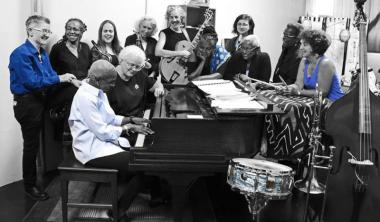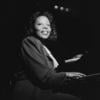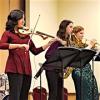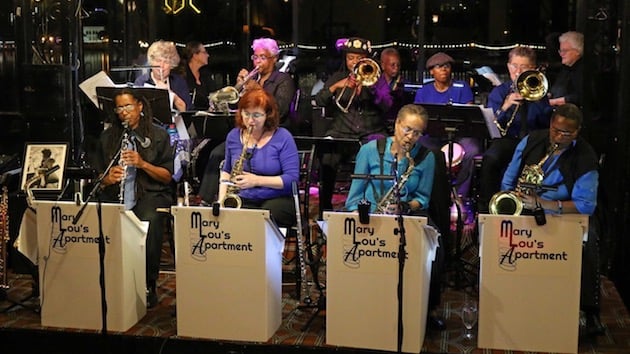
Much like Dizzy Gillespie, Thelonious Monk, Melba Liston, and other renowned jazz artists who in the 1930s and ’40s gathered to share their music in the Harlem apartment of legendary pianist and composer Mary Lou Williams, the all-woman band members of Mary Lou’s Apartment don’t need a special occasion to come together to make great art.
Even so, a free performance February 29 at the Tarea Hall Pittman South Branch of the Berkeley Public Library and a bigger splash in a debut concert March 10 at Yoshi’s invites the public to participate.
Celebrating in the concerts Black History Month, International Women’s Day, and Women’s History Month, and paying tribute to the legacy of Williams and trombonist/composer Liston, Mary Lou’s Apartment is co-founded and led by bassist Mwamba Blakwomyn and trombone player Pat Mullan. The Bay Area-based ensemble was formed to bring long-overdue recognition to the work of Williams and Liston and to the undeniable impact the two African-American women had on jazz history.
In a conversation with Mullan, she speaks about the genesis of the group’s interest in Williams (1910–1981) and her deep connection, as a fellow trombone player, to Liston (1926–1999).
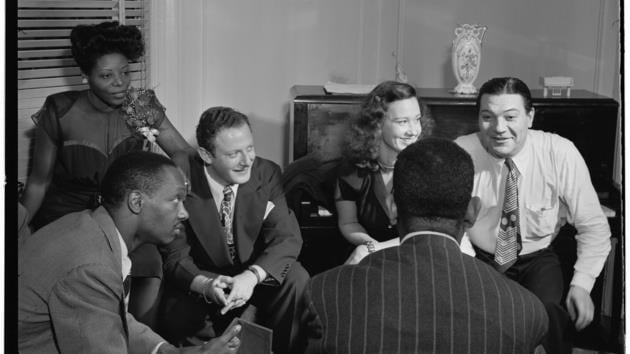
As a librarian and supervisor of arts events at the downtown Berkeley library for more than a decade, you produced jazz concerts and festivals. What were the highlights of those efforts?
The highlights were the festivals that developed from a one-day event into four-night festivals and ran for 13 years. We had diverse performers and got to highlight artists like Jessica Williams. We did a Monk Festival that was a fantastic solo concert. Another year we did a Count Basie and then an Ellington, and a “Renew New Orleans” after [Hurricane] Katrina. One fantastic year for me was a “Year of the Trombone” festival. We invited Melba Liston to come, and even though she was in a wheelchair, she came to each concert. She couldn’t handle the trombone by then, but she was still composing on a little iMac with a dot-matrix printer.
Did those festivals impact the formation of Mary Lou’s Apartment?
Yes, but my concert production times weren’t just at the library, so I have a broader picture of the jazz scene. In terms of Mary Lou’s Apartment, everyone is a musician of some ilk and supports themselves through music.
From the series at the library, what did you learn and appreciate about the Bay Area jazz audience?
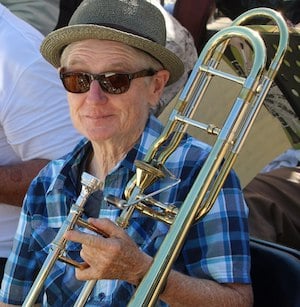
It was instructive because it was free, open to the public and we were presenting visible, well-known names. People who had financial means to go to Yoshi’s to hear jazz and people of limited means who didn’t have those same privileges would show up. We had time in the middle and at the end for people to actually talk to each other. That meant people who were homeless and people who live in the hills came together. I wanted to engender in the audience, authentically, our mixed-up diversity onstage. I wanted them to be enticed to come because they would see themselves onstage. They’d see people of color and cultural diversity, like one series that involved music, art, and poetry reflecting on Hiroshima and Nagasaki. The Japanese community turned out for that and a large contingent of non-Japanese people too. Across borders, people looked at art, history, and culture they were or weren’t familiar with. It takes intention to make that happen. I was grateful to have the opportunity and enough funding to do it.
Why focus and found the MLA ensemble around the work and legacy of Mary Lou Williams and Melba Liston? Why not Nina Simone or Alice Coltrane?
Both Mary Lou and Melba were musical geniuses and they’ve been overlooked. Simone and Coltrane, also geniuses; but not overlooked so much. Mary Lou made many recordings and worked with giants in jazz, but even jazz heads today are not familiar with her music. For Melba Liston, playing trombone, an instrument not as accessible as piano, her list is impressive too. But women [in that era] were singers and piano players, not players of horns or drums.
Beyond that, their music is completely compelling and contemporary. Mary Lou has written stuff in the 1930s that sounds like it was written yesterday. “What’s Your Story, Morning Glory?” is very bluesy and down home, and in the ’40s, it changed jazz rhythms and harmonies. “Lonely Moments” is a swing tune with a riff bass [line], but her jazz harmonies are modern. She moved from the foundation of blues, big band, swing, into something that sounds fresh today.
Talk to me about the overall importance of Williams’s apartment in Harlem and her role in mentoring women and male artists:
The significance of her inviting people after hours into her apartment, with artists showed each other what they were working on — it’s amazing the guys would have the presence of mind to appreciate being taught by a woman 10 years older than them. She’s there, explaining to them what they’re doing while they developed bop. Dizzy was notorious for telling musicians and composers they had to understand piano to break things down. He was following her lead about how to be a musician and not have to compete, not be at odds with each other. Melba did the same thing in her style of working with people, with Mary Lou, with the band when Dizzy brought her back to work with him.
Her recordings under the Asch Label display structural elements of symphonic poems and other stylistic aspects of Romanticism. What impact does that have on jazz music history and the modern Bay Area scene?
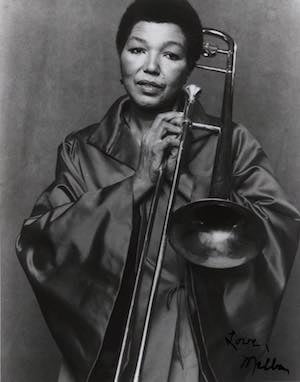
I’m not an academic appreciator of Mary Lou, but I’d say especially Melba’s grasp of genres was very broad. Mary Lou’s talent was for hearing a piece and being able to play it right away, then play it in a different key, meaning she was taking the recitation of a work with her own style on it. Melba took classic pieces like Debussy’s Reverie and turned it into a swing jazz ballad for Quincy Jones’s band. She took it beyond interpretation, arranging her horn section, writing her improvisation over the horns, even while acknowledging Debussy. Martha Young — a contemporary of Melba’s who lived in Berkeley and was a tremendous piano player — would have said, “It’s all music.” So anyone who’s performing and has interest outside their personal preferences is open to what someone else has to say. Different cultures hear commonality in rhythm and go from there. The Bay Area is a big swirly part of that. Today, you can hear African, Afro-Cuban, and Latin bands in one weekend. There’s intention to cross those borders.
What single thing do you most admire about Williams as a musician/composer?
The thing that’s most compelling is her left hand. Her use of bass lines. Her reliance of the bottom end of the piano or the full band to state what may or may not be heavy. She states her plan with authority and creativity.
What single thing about Mary Lou as a woman artist and person of color?
I’ve thought about that question. The attribute I admire most is survivor. She experienced more pain than others, maybe because she was open. She lived for music and had to play. In her time, and at her level of musicality, it would have been a very difficult thing to do. She was sexually assaulted on the road and struggled from that. She also knew she wasn’t getting the pay, the attention, the audiences she knew she deserved and saw males getting. For years, she moved out of the country and stopped playing, converted to Catholicism, made a spiritual journey, and the decision she was going to survive. She made a commitment to helping her colleagues too, so that’s a saving grace. A strong person, not a victim, came out of that.
What is most true of Liston and her performance as a trombone player?
It’s harder to talk about her because it’s closer to me, as a trombone player. Melba had great self-effacement. She was driven to play: she found her voice on the trombone as a young girl. Nobody was showing her how to do it or telling her it was what she could do. She saw a trombone, asked for it, her mother bought it for her. She had musicality: she could recognize what she liked, there was a sound she heard in artists like Ellington and Lawrence Brown; a smooth, ballad-y, full, rich subtlety. She had talent to arrange music at age 15 without being taught. Her ballads — she was a virtuoso. She could play high, she could play fast, but she didn’t have to play that way to prove it. She said that as a trombone player she had the best seat in the band, that if felt like sitting in the middle of an engine.
Is there extra connection to Williams in the healing aspirations of Mary Lou’s Apartment and her belief that the blues represented the “spiritual feeling” in jazz?
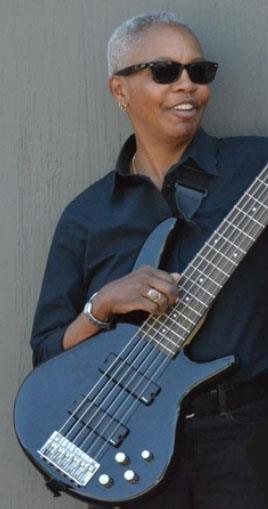
Yes. I’m the co-bandleader with (multi-instrumentalist) Mwamba Blakwomyn and in talking about the band for a full year before we started it, we talked about Mary Lou and Melba and why we wanted to play their music. We came to the idea that if we could put together a group of women who could get along, not have divas just wanting the next solo but wanted to be kind to each other, that we would create a space that would help us all. It was a personal need, a musical need, a need for a group that would be copasetic. That has happened — and it startles me. We’re just putting a band together; we’re not trying to cut CDs and go on big tours. We’re trying to give respect, learn from each other, come together every week and feel fulfilled by the music, and also open with each other. Within three weeks of our meeting, one woman told me, “This is the most important two hours of my week.” I continue to hear that from them.
This healing energy seems to project out into the audience. They see a group of various aged women, black women and white women, getting along and having a good time. It’s different than other big band concerts, I have to tell you. The healing part, to have a space like that? It’s genuine. We think the audience needs it too.
Do you believe women composers and performers working in jazz are finding more opportunities and recognition in the current culture?
There’s more exposure now, but that discounts how many women only ran years ago who had the same level of talent and affinity for the music but for a slew of reasons didn’t get to do it. Because we’re yelling about it more now, working towards it, there’s more things like Berklee College of Music in Boston, and (three-time Grammy–award-winning drummer) Terri Lyne Carrington making it clear women have a place in jazz that has to be respected, acknowledged, compensated. Because of her and groups that formed after #MeToo, more jazz women feel empowered to perform and study.
Please talk about a two of the pieces on the setlist for the concert at Yoshi’s and at the library. First, Blue Reach Suite (three original works by Pat Mullan).
It’s a piece I wrote in tribute to both Mary Lou and Melba. In each of their midlives, they had to leave their work, having been beat down. Melba went to Jamaica; Mary Lou had her trip to Europe. That gave them time to perceive the rest of their musical lives.
“Night Flight” is Mary Lou taking off for England and her religious conversion. “Tough and Tender Heart” is for Melba and is more trombone-y. There’s a brass quartet in the middle and it’s about her toughness and her shyness. “Blue Reach” is a conversation between Mary Lou and Melba, based on the blues. I used their words and in the piece there’s spoken words; short eight-bar sentences they said, not necessarily to each other, but things they said. The “reach” part is about the intention you have, to communicate, to reach across. I like sailing and what’s called a beam reach is my favorite point of sailing. It’s the wind coming across and going as fast as you can go. I wanted to get that freedom.
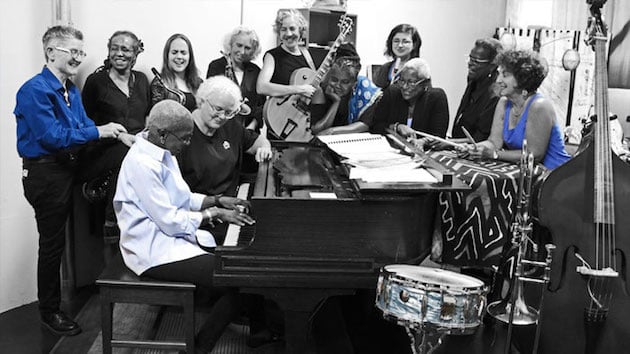
And “Scorpio” (Mary Lou Williams)?
It’s tremendous. It’s part of her Zodiac Suite. This one is high drama, mystery, and moodiness. In a short, three-minute piece, she’s able to impart all of that. It’s also a good vehicle for solos. There’s intense bass figures and with a little push, the soloists are free to explore those areas.
What dream project is next for the band?
With this band, I’d like to invite Billy Strayhorn into the apartment and explore the lesser known pieces he wrote, maybe at Mary Lou’s apartment. He had attributes that Melba had. There are other ideas, of course: mainly, taking this project to Kansas City, Madison, and other places with appreciation for jazz and to audiences who might groove to what we’re doing.

